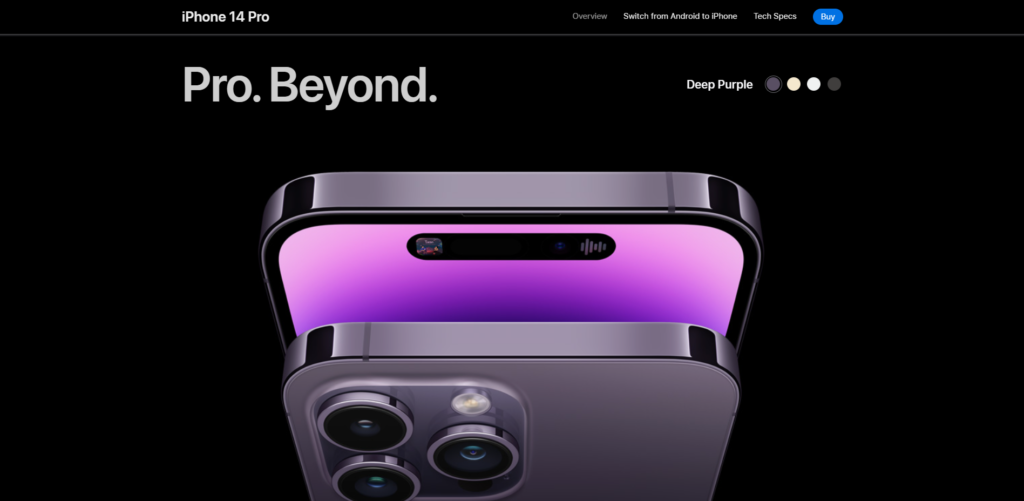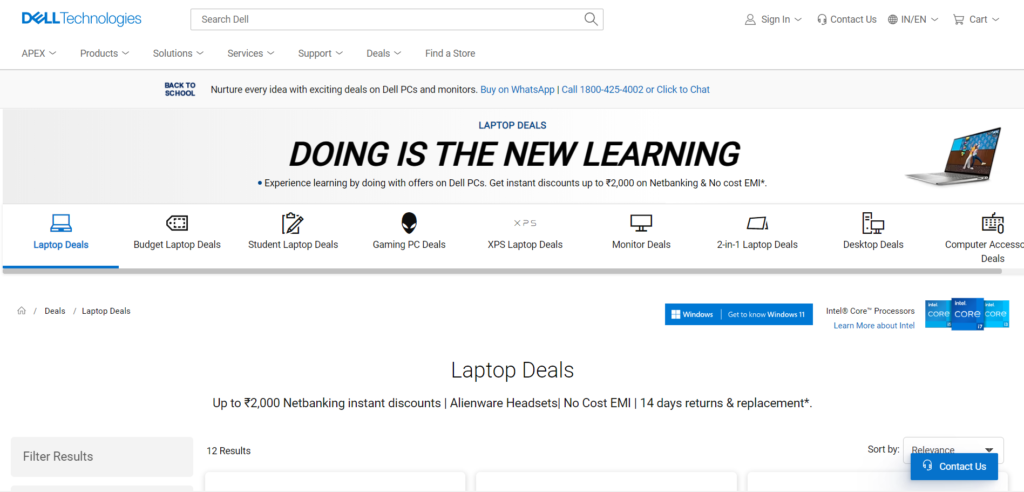Understanding the Importance of UX/UI Design in IT Products.
In the introduction, you can provide an overview of UX/UI design and its significance in IT products. Explain how good design can positively affect the user experience of various IT products, including websites and mobile apps. Emphasize the importance for businesses to invest in UX/UI design to ensure a better user experience. Avoid plagiarism by using your own words and ideas.
In addition to improving user experience, investing in good UX/UI design can also have other benefits for businesses. For example, it can lead to increased customer satisfaction, higher engagement and retention rates, and even increased revenue through repeat business and positive word-of-mouth. It can also help businesses stand out in a crowded market and establish a strong brand identity. However, achieving these benefits requires a deliberate and thoughtful approach to design, one that takes into account the specific needs and preferences of the target audience.
Before we dive into the various components of UX/UI design, let’s clarify the difference between UX and UI design.
UX design, or user experience design, focuses on creating products that are accessible and enjoyable for the end-user. This includes understanding the user’s needs, preferences, and behaviors, and designing interfaces that meet those needs. UX design is concerned with the overall experience of the user, including factors such as usability, accessibility, and satisfaction.
UI design, or user interface design, on the other hand, focuses on the look and feel of the product, how it’s presented, and how it interacts with the user. UI design includes creating visual elements such as buttons, icons, and typography, as well as designing layouts and interactions that are intuitive and user-friendly.
By understanding the difference between UX and UI design, businesses can ensure that both components are incorporated into product development. This, in turn, can lead to products that are both visually appealing and user-friendly
What is UX/UI design?
UX/UI design plays a critical role in creating amazing and easy-to-use websites and applications. UX design, short for User Experience design, is responsible for ensuring that products are accessible and enjoyable for end-users. UI design, on the other hand, focuses on the product’s look and feel, how it’s presented, and how it interacts with the user. When both of these design aspects are combined, the result is an overall experience that satisfies users’ needs and expectations.
In IT product development, UX/UI design is crucial because it prioritizes the user’s experience. When a website or application is user-centric, it means that it is tailored to their preferences and needs, leading to a positive user experience. A well-designed website or application not only looks good but is also easy to navigate, which increases the likelihood of users returning and using the product again.
It’s essential to appreciate the effort put into UX/UI design while using your favorite website or application. If you’re planning to develop your own product, investing in good UX/UI design can make all the difference in creating a product that users will love.

example of this landing page of Apple website.
How UX/UI design is used in different IT products
UX/UI design is critical in developing IT products that prioritize the needs and preferences of users. Below are some use cases where UX/UI design plays a vital role in improving the overall user experience:
- Websites: UX/UI design is used to create visually appealing and user-friendly websites. It involves designing easy-to-navigate layouts and interfaces while ensuring that the website is accessible to all users.
- Mobile Apps: Mobile apps have become a part of our daily lives, and UX/UI design is essential to their success. It helps create engaging interfaces, streamlined navigation, and intuitive user experiences.
- Software: UX/UI design is used to create software that is easy to use and navigate, even for users who are not tech-savvy. It involves designing interfaces that are user-friendly and intuitive, as well as ensuring accessibility to all users.
- Games: UX/UI design is an important aspect of game development. It helps create engaging interfaces, intuitive controls, and immersive experiences for players.

example of this landing page of Dell website.
By incorporating UX/UI design into their IT products, businesses can create products that are easy to use, navigate, and visually appealing. This, in turn, can lead to higher user engagement and customer satisfaction. With UX/UI design, users can have a seamless and enjoyable experience with the product, leading to increased loyalty and repeat usage.
The process of UX/UI design involves several components that work together to create a product that is user-friendly and visually appealing. Wireframes are one such component that helps in defining the structure and layout of a product. They provide a visual representation of the content, information architecture, and user flow. Prototypes, on the other hand, are interactive models of the product that allow designers to test and refine the design. User testing is also an important component of UX/UI design, as it helps to gather feedback from real users and make necessary changes.
Creating a good user interface and user experience involves several factors. One of the most important factors is simplicity. A simple and intuitive design can go a long way in creating a positive user experience. It’s important to keep the design clean and clutter-free, with easy-to-understand language and clear navigation.
Consistency is another important factor in UX/UI design. Consistency in design elements such as color, typography, and spacing can help users to understand and navigate the product more easily. A consistent design also helps to establish brand identity and improve the overall user experience.
Feedback is an essential component of UX/UI design. Users should be able to easily provide feedback and receive feedback from the product. The feedback forms, surveys, or social media channels can provide great insight. Feedback helps to identify areas for improvement and make necessary changes to enhance the user experience.
In addition to these factors, accessibility is also an important consideration in UX/UI design. The product should be designed with all users in mind, including those with disabilities or limitations. Accessibility features such as alternative text for images, captions for videos, and keyboard shortcuts can improve the user experience for all users.
Pursuing a career in UX/UI design:
- Learn the basics: Start by familiarizing yourself with the principles of UX/UI design. There are many free online resources and courses available, such as those offered by Udemy, Coursera, and Skillshare. You can also read books on the topic, such as “Don’t Make Me Think” by Steve Krug and “The Design of Everyday Things” by Don Norman.
- Build your skills: Practice your skills by creating your own design projects or contributing to open-source projects. Use design tools such as Sketch, Figma, and Adobe XD to create wireframes, prototypes, and visual designs.
- Network and collaborate: Attend UX/UI design conferences, join design communities on social media, and collaborate with other designers to learn from their experiences and build your portfolio.
- Consider a formal education: If you’re looking for a more structured approach, consider pursuing a degree or certificate program in UX/UI design. Many universities and design schools offer programs in this field.
- Keep learning: UX/UI design is constantly evolving, so it’s important to stay up-to-date on the latest trends and technologies. Attend conferences and workshops, read design blogs and publications, and continue to learn from other designers.
Useful resources:
- Udemy: UX/UI Design Fundamentals
- Coursera: Interaction Design Specialization
- Skillshare: User Experience Design Fundamentals
- Sketch: Started with Sketch
- Figma: Started with Figma
- Adobe XD: Started with Adobe XD
The salaries for UX/UI designers vary depending on several factors, including years of experience, location, and industry. According to data from Glassdoor, the average base salary for a UX/UI designer in the United States is around $85,000 per year, while in India, it ranges from ₹340,000 to ₹1,400,000 per year, depending on experience.
Entry-level UX/UI designers in the United States can expect to earn an average of $64,000 per year, while mid-level designers can earn around $85,000 per year. Senior-level designers can earn upwards of $110,000 per year.
In India, entry-level designers can expect to earn an average of ₹340,000 per year, while mid-level designers can earn around ₹700,000 per year. Senior-level designers can earn upwards of ₹1,400,000 per year.
However, it’s important to note that these figures are just averages, and salaries can vary widely depending on the company, location, and industry.
Do follow us:
Stay updated on the latest trends and best practices in software development by following us on Instagram, YouTube, Twitter, Facebook, or LinkedIn.
